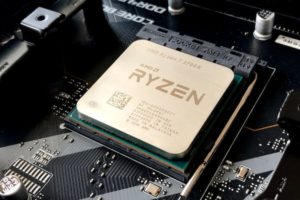Quick Navigation
The Tesla Model 3 is a highly advanced electric vehicle that has gained widespread popularity for its innovative features and sleek design.

One of the key components of the Model 3 is its touchscreen display, which serves as the primary interface for controlling many of the vehicle’s functions.
However, some Model 3 owners have reported issues with their touch screens, including when the screen goes black.
In this article, we will dig into the possible causes of a black screen on a Tesla Model 3 and explore the steps to take to address the issue.
It is necessary to know the significance of the touchscreen display and what you should do in case of any problems.
What Causes of Tesla Model 3 Screen Blackout
The black screen appearing on the Tesla Model 3 can be due to various reasons.
While driving, a black screen on a Tesla Model 3 can be a severe issue as the vehicle’s central control panel connects you with all the critical systems, such as the gear selector, defogging, entertainment, and navigation.
If any of these systems malfunction, it’s crucial to address them immediately.
The time the screen remains black depends on the cause of the issue.
To understand the causes and take action when it occurs, let’s delve into them.
Below are a few of the most common causes of a black or blank Tesla main screen while driving:
System Overload
System overload is a frequent cause of blank screens in Tesla Models while driving.
It occurs when the car computer’s touchscreen is overwhelmed by too many running applications.

What to Do:
If you are experiencing this issue, you can do the following steps:
- Restart the Touch Screen: The first step in addressing a system overload is to restart the touch screen. Hold down both scroll buttons on the left and right sides of the screen for 10 seconds.
- Clear Cache: Clearing the cache of your touchscreen display may also help resolve the issue. You can access the “Storage” section in the vehicle’s settings.
- Disable Unnecessary Features: If the issue persists, disabling unnecessary features and applications on your Model 3 may help reduce the workload on the system and prevent future overloads.
- Contact Tesla Customer Service: If these steps cannot resolve the issue, you should contact Tesla for further assistance. They will be able to guide you on what steps to take next.
User Error or Third-Party Apps
Playing music continuously through streaming services or third-party apps can lead to lagging on your Tesla screen.
Running background tasks on platforms such as Spotify or Apple Music may also result in a blank (black) Tesla touchscreen.
What to Do:
To prevent these issues, regularly check for system updates and upgrade to the latest software.
You can also do the following:
- Disable Third-Party Apps: The first step in addressing a third-party app issue is to disable any third-party apps that may be causing the problem. You can access the “Applications” section in the vehicle’s settings.
- Uninstall Third-Party Apps: If disabling the third-party apps does not resolve the issue, you may need to uninstall them.
- Contact the App Developer: If you cannot resolve the issue by disabling or uninstalling the third-party app, you should contact the app developer for assistance. They will be able to guide you on what steps to take next.
- Restore the Factory Settings: If the issue persists, restoring the vehicle’s touchscreen display to its factory settings may resolve the problem. You can access the “Factory Restore” option in the vehicle’s settings.
eMMC Failure
The root cause of this malfunction is believed to be the set Multi-Media-Card memory.
It is a usual issue in Tesla Models manufactured before 2018.
According to Tesla, the main screen may become less responsive over time and require rebooting when it goes blank.
Additionally, turning on the main screen may take longer. Eventually, the screen could suffer a complete breakdown.
What to Do:
- Contact Tesla Customer Service: The first step in addressing an eMMC failure is to contact Tesla customer service. They will be able to guide you on what steps to take next.
- Take the Vehicle to a Tesla Service Center: If the eMMC failure is confirmed, you must take your Tesla Model 3 to a service center for repair. A trained technician can diagnose the issue and replace the faulty eMMC.
- Backup and Restore: If the touch screen goes black due to an eMMC failure, you may be able to restore the data on your Vehicle by performing a backup and restore procedure. It will transfer your saved data to a new eMMC, restoring the functionality of your touchscreen display.
How to Reset Tesla Model 3 Screen Black
Here’s how to reset the black screen on the Tesla Model 3:
CPU and GPU Reboot
If the Model 3 or Model X screen freezes, goes black or isn’t performing optimally, resetting the CPU and GPU can often refresh the system and resolve the issue.
Procedure:
Put the car into Park and press down on the brake pedal while holding both scroll buttons on the steering wheel for a few seconds.
If successful, the Tesla logo will appear on the screen, indicating a successful CPU and GPU refresh, and the vehicle should reboot with no issues.

How to Factory Reset the Tesla Model 3
The factory reset process on a Tesla Model 3 is a method to restore the vehicle’s software to its original factory settings.
This process erases all personal data, settings, and configurations made after the car is delivered.
It must be used as a last resort if other troubleshooting methods, such as a CPU and GPU refresh, have failed to fix the problem.
Here is how to perform a factory reset on a Tesla Model 3 or Model X:
- Put the vehicle into Park: Before starting the factory reset process, ensure the car is in Park.
- Touch the Tesla “T” logo: Locate the Tesla “T” logo at the top of the screen and touch it for about 10 seconds. It will initiate the reboot process.
- Wait for the process to complete: The factory reset process may take several minutes. The screen may go black and display the Tesla logo during this time.
- Set up the system: After the factory reset, the vehicle will restart and be in its original factory state. It means all personal data and settings will be erased, and the car will need to be set up as if it were brand new.
It’s important to note that a factory reset will erase all personal data, including contacts, music, and navigation data, so make sure to back up important information before proceeding with the factory reset.
If the screen still doesn’t function properly after a factory reset, it’s recommended to contact Tesla service for further assistance.
Conclusion
The touchscreen display in a Tesla Model 3 is a crucial aspect of the vehicle’s operation and provides access to various features like navigation, climate control, music and more.
However, some Model 3 owners have reported blackouts in their touch screens.
It is essential to know the significance of the touchscreen display and the potential issues that may arise.
With prompt action and proper preventative measures, Model 3 owners can ensure the continuous functioning of their vehicle and the enjoyment of all its innovative features.
If a black screen issue occurs, it is recommended to follow the steps discussed in this article or to contact Tesla customer service for further assistance.
We hope that the information we provided helps you solve the issues. Or guide you on what to do in case screen blackouts happen on your Tesla Model 3.

Kevin has been hanging around cars and automobile magazines since he knew what a car is. He grew up in his father’s 1995 Mercedes E320 Wagon and Volkwagon Phaeton W12 2004. He rides his first car, a manual 1979 Porche 911SC.
Currently, he owns an Acura Integra GS-R. During his childhood, he showed a keen interest in how things actually work and fix them. This passion transforms into his eternal love for cars and bestows him an ideal position in one of the leading automobile companies; whenever he finds time, he takes out his Acura and opts for the longest possible route to find hidden wholesome pleasure in a road trip.
Want to read some of the articles written by Kevin? Head to our blog section to find out all the articles written by Kevin.

![Tesla Model 3 Black Screen [Solved]](https://carsupercare.com/wp-content/uploads/2023/02/Remote-Start-Flashing-Blue-Light–-What-to-Do-4.jpg)




